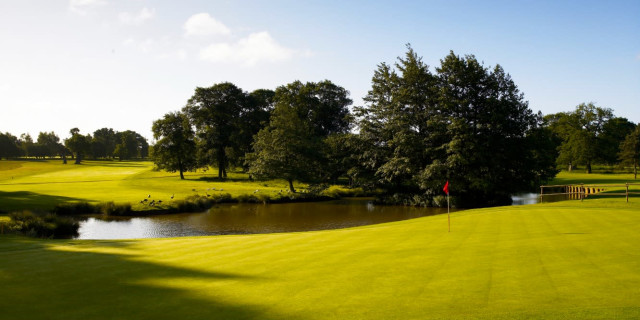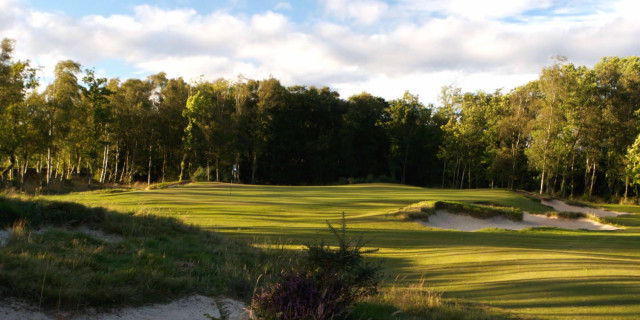Saunton Golf Club Feature Review
Having completed our odyssey to Royal North Devon we made our way to the beautiful town of Braunton, close to our next destination of Saunton East and West courses.
It was the second day of our trip and we were faced with the prospect of 36 holes, playing both the West and East courses at Saunton Golf Club.
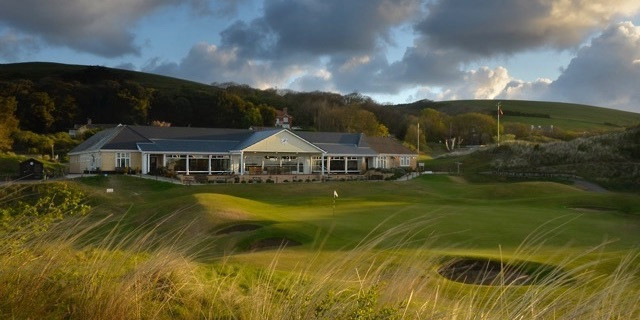
There was an accidental but brilliant choice of venue as we stumbled upon a superb Bed and Breakfast run by Jules and Harry known as Holmsleigh Bed and Breakfast. They have a bespoke room that can accommodate up to six golfers. There is ample off-street parking and the food is excellent. Coupled with the venue being walking (staggering) distance to the town centre and this is the perfect golfing accommodation.
In the town, consider eating at one of the local family-run restaurants. We chose Squires and enjoyed some of the finest fish and chips I had ever eaten. Great value as well. There are also several local pubs that accommodate the tourist trade. This is an area I need to revisit to explore more fully but this trip has whetted my appetite.
Common features to both courses
Saunton has a highly recommended certification from Golfshake members, with 100% saying that they would return to the venue. This is a huge compliment and validation of both the facilities and quality of courses on offer. Having experienced both courses, I am not surprised.
General Tips
Arm yourself with the excellent course planners available from the pro shop.
The planners are well designed with great graphics giving lots of useful information. I like the way they suggest different lines of shot from the tee, giving accurate yardages to each strategic option. Having landmarks to aim at made this a much more enjoyable experience given that we had not played here before. It also speeds up the pace of play by giving accurate reference points. I also like the photography from the tee boxes and the locations of each image is also given as these perspectives change dependent on which tee is being played.
I recommend any visitor visit the excellent website for each course beforehand
Each hole is detailed individually with a flyover facility and professional notes and guidance.
Link this to use of the course planner and you maximise your chances of a successful visit.
Proper strategic planning of your driving lines from the tee before your visit will pay dividends.
Background
These are 36 holes of the finest links to be found in the United Kingdom. Sir Nick Faldo has been one of its many fans since playing here as a boy. He said: “I’ve no doubt that if the East Course were located on the coast of Lancashire or Kent it would have hosted an Open Championship by now."
I can't argue with this view, having tried and failed to master this course in benign weather conditions. There is a serenity about this place that is difficult to describe but wonderful to experience.
Clubhouse
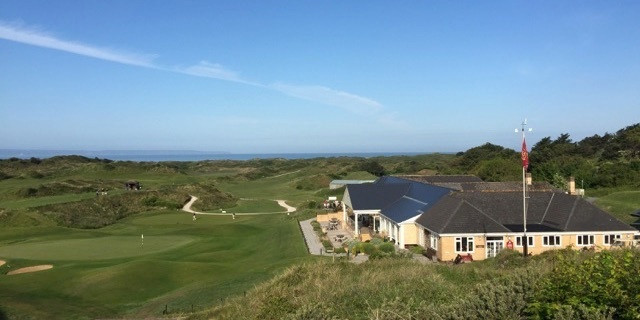
Give yourself time to enjoy the views from the superb clubhouse over both courses. They are stunning. The clubhouse offers terrific home- made food at very competitive prices. I ordered the Cornish Steak and Potato pasty with a salad. It was magnificent and covered my 12 inch plate. Hearty , home-cooked golfing food.
There were a number of non-golfers enjoying the clubhouse during lunch, which is a good indication of the quality of the food on offer. Most were locals who considered this facility a hidden gem.
History
Golf has been played heret since 1897 and many leading tournaments have graced its fairways, including the British Boys Championship won by Sergio Garcia.
The East Course was redesigned by W Herbert Fowler n 1919 with slight modifications made to reduce the impact of the advance in equipment and technology. Its development was hampered by both world wars. It was used for training for the D Day landings and the use of American tanks for these landings did not make the greenkeepers' task any easier! Using prisoners of war, it took until 1952 before it was back to its former glory.
There is a montage on the website that I would recommend for anyone with an interest in golfing and social history. Not many clubs can illustrate the use of tanks and flame throwers on their fairways.
Ecological importance
The courses are located on land designated as an Area of Outstanding Natural Beauty, a Site of Special Scientific Interes, a Special Area of Conservation and a Unesco Biosphere Reserve.
The West Course
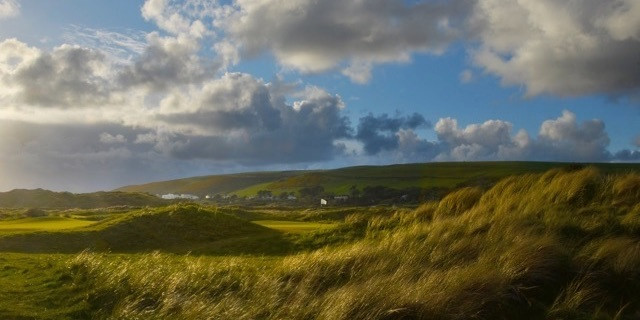
If I were a member here I would struggle to choose which course to play. It’s like being asked as a parent to pick your favourite child. They have similarities but there are subtle differences’ as well. These courses have a serenity about them that is difficult to describe.
Having read the history of the course it appears that an attempt to use building rubble to support drainage from the greens failed in the 1930s, with Donald Steel being brought in to implement a root and branch renovation. He is rightly proud of this work. The green are superb. They are true, consistent and a real pleasure to play on.
Some people may consider the West Course to be slightly inferior to its sister, but I would struggle to separate them in terms of ranking. The fact that they are on the same complex is an absolute blessing and each should be savoured. I can think of few places on this earth where 36 holes of golf so easily complement each other.
Carnoustie and St Andrews have multiple courses and Royal Portrush is a brilliant 36-hole facility. Saunton easily stands comparison with those, which is a real accolade.
The West emulates the general characteristics of the East but has its own distinctions and offers no weak holes. The West is not brutally long but it still requires strategic golf from the championship tee, from which it measures 6,596 yards, par 71, SSS 72.
Second, Kestrels, par four, 356 yards, white tees
This is a very strong hole. The tee shot should favour the left side of centre to give access to the green with a lofted club. If you are long and through the green prepare for a rollercoaster ride for any pitch shot.
Fifth, Plover, par four, 394 yards, white tees
Another good par four. Try to avoid the left side of the fairway as the hillocks and terrain will reduce tee length substantially. Guess how I know this? The course guide even gives options to aim short of the green towards a bunker, leaving a straightforward chip onto this green. Great option, but I still came unstuck through poor execution.
Eighth, Ragged Robin, par four, 381 yards, white tees
I took an ambitious line off the tee and skirted with the two pot bunkers on the left of the fairway. What I initially thought was a mistake took a beautiful links bounce and bounded down the fairway into a spot that I couldn’t have improved had I had walked forward and placed the ball. This green complex is stunning, offering a variety of pin placements. Avoid going long as the chip back is a very high tariff shot. From a great tee shot I managed to fight hard for a bogey.
12th, Orchids, par five, 480 yards, white tees
Playing this hole while avoiding the many hazards is a real achievement. I avoided the ditch by playing short and over, leaving a wedge to the green, only to find a bunker. This is a superb golf hole that fits into its surroundings in a naturally beautiful manner.
18th, Rookery, 183 yards, white tees
This is a superb finishing hole. The green has a narrow entrance and anything short gets propelled towards two well-placed bunkers. The green features humps and swales, making an chip or putt a real challenge. This is a worthy finishing hole that will stay in my memory for a long time.
The East Course
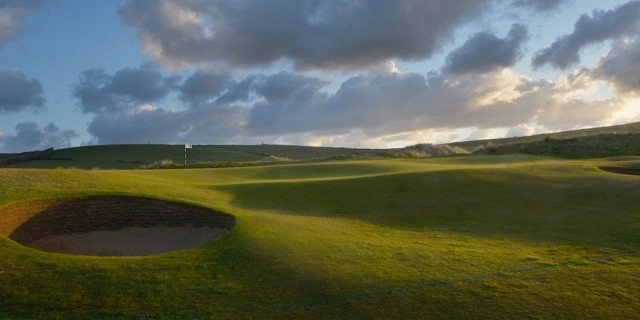
I preferred the East, which is the most pleasing to the eye. I am not a regular links player but found myself distracted much more on the first round of the day. I also have many more photographs of the East Course.
It is a true links with its holes settling naturally between the sand dunes and natural terrain with no need for assistance from man. It is beautifully natural and there is a superb flow to its passage from the first to the 18th. There are natural distractions on each tee and it became a real challenge to retain focus on the game in hand. In the end I gave up and merely enjoyed everything Saunton has to offer. The option of multiple tees provides a great test of golf for all standards.
This is one of those places that a successful visit can be defined in many ways. It is unlikely that you will play par golf but I still considered my visit a complete success as this course will live long in the memory. It was an experience to be savoured and enjoyed.
I intend to depart from my usual style of review slightly as the information given on the club website provides all that a visiting golfer could need. The following descriptions first featured in a review for Fine Golf by Peter Newman and can be found on the club's website but these were my own personal favourites.
1st
Ascending the dune to the elevated first tee the pulse quickens. A sharp intake of breath, facing southwest, into the prevailing wind, the opening challenge is a 478 yards par 4. Even the modest carry over heavy rough and dunes can seem less than a foregone conclusion…but banish the nerves, swing easy and aim at the far bunker to the left. Though long hitters may be tempted by the 250 yard carry over the mound to the right, to open up a better view of the green. Short ditches perpendicular to the fairway left and right can threaten any slightly mishit second shot, but avoid them and most will be content to have left a short pitch (or even a Texas wedge) onto a long, narrow undulating green, protected by deep bunkers left and right. In common with almost all the holes on this course, go through the back at your peril…the rough can be brutal.
4th
If you are receiving just one shot this is where you get it….a par 4 again, at 441 yards and still into the prevailing wind. Aim the tee shot to finish in the left half of the fairway, but not so far left that you catch one of the three well-positioned bunkers lurking there! The view of the green is partly obscured by a high dune to right, so sight the marker post behind the green and take plenty of club for the second shot. The landing area in front of the green is generous, but if you don’t quite make the putting surface in two take a straight faced club and run your third up the steep slope towards the flag.
5th
A Saunton icon, the first par 3 at only 122 yards, but with severe slopes off the front and back…and also, now the ‘hump’ on the right edge has been removed, on both sides! So be sure of your club selection and hit a crisp and positive shot to hold the undulating putting surface. Not many make par from over the back!
14th
Reversing direction once again, back into the prevailing wind, this 455 yards par 4 will challenge even the most accomplished golfers. A magnificent prospect from the elevated tee, aim just left of the large bunker that dominates the hole. Quite appropriately named as ‘The Narrows’, the fairway for most of the second half of the hole is little wider than a pathway. So if your tee shot is long enough to have a crack in two, take plenty of club and aim just right of the flag. But any mishit overambitious attempt that finishes in the rough short and left, or the rushes shorter and right, can be catastrophic. So, if you’ve not hit your very best tee shot, consider laying-up into the neck of the narrow section, from where you should have a good view and a full short iron in.
16th
‘Fowler’ – named after the course’s designer and appropriately so, as it is a brilliant hole. A dog-leg left at 434 yards, but taking the longer route down the right half of the fairway, just inside the two bunkers that look to collect a fade, is a must. Tough rough, hidden bunkers and dunes spell real trouble for anything that just misses the left edge of the fairway all the way down the hole. The green itself nestles into the dunes on the left and is hidden from view for the second shot by a ridge of that runs across the line. Trust the marker post at the back of the green and your yardage and look to carry it all the way to the putting surface. If your tee shot has left you too far back aim for the ample fairway to the right of the green and look for your par with a good pitch and putt.
17th
The final par 3, much longer than the others at 207 yards and often into a stiff wind from an elevated tee to boot. Hitting it straight here is more important than getting the length just right, so take plenty of club and swing smoothly. The green is well bunkered left and right and getting it up and down from the sand, or from the dunes that lie beyond, is very awkward indeed. But anything that approaches the front edge gives you a good chance of making your par.
For further information on the Atlantic Links and Andrews' trip visit the 'Atlantic Links Golf Trip' feature.
Related Content:
What do you think? post your thoughts and feedback on the Golfshake Forum: https://forum.golfshake.com/

